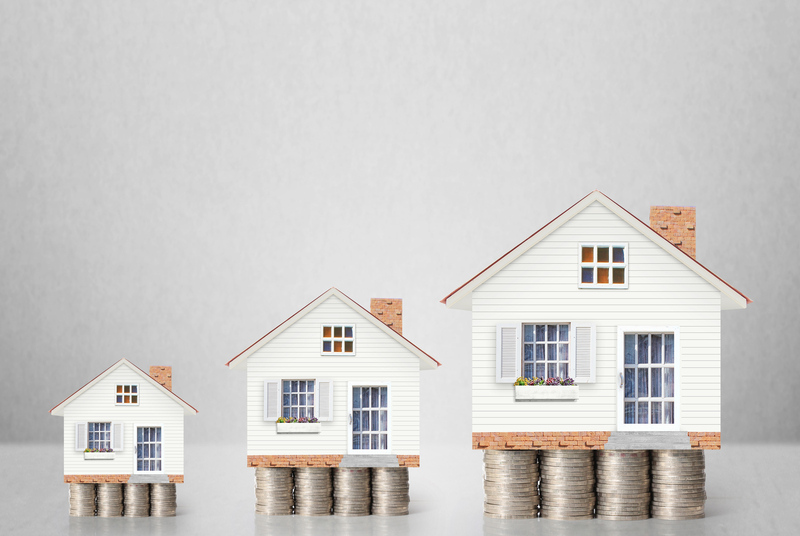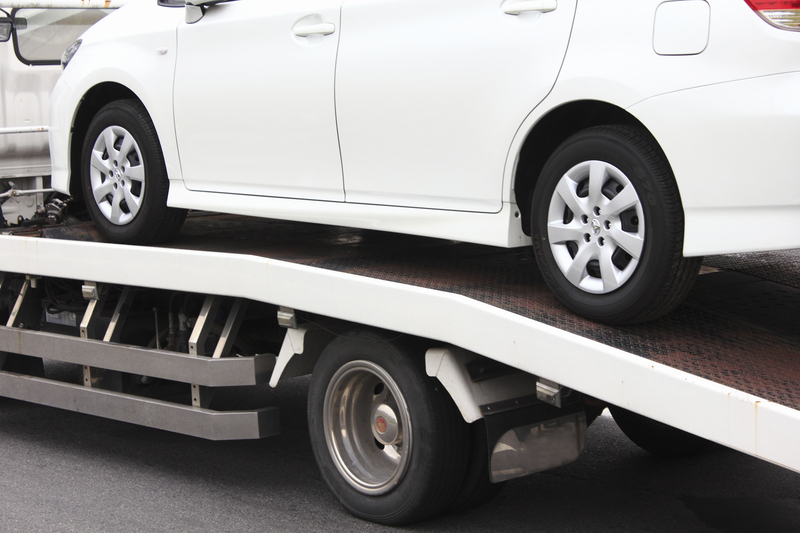Navigating Piano Moving: Why DIY Isn't the Answer
Posted on 08/06/2025
Navigating Piano Moving: Why DIY Isn't the Answer
For many music lovers and homeowners, the piano stands as a centerpiece -- an instrument that embodies artistry, tradition, and value. However, when it comes time to relocate your cherished piano, one crucial question arises: Should you attempt piano moving yourself or trust the experts?
Understanding the Complexities of Piano Moving
Whether you own an upright or a grand piano, the difficulty in moving these instruments extends far beyond their substantial weight. While the DIY spirit is commendable when painting a room or assembling furniture, it often leads to disaster for piano moves. Piano moving requires specialized knowledge, unique tools, and meticulous handling to safeguard both the instrument and your property.
- Weight Distribution: Pianos are incredibly heavy, often weighing anywhere between 300 to over 1,000 pounds, with unequal weight distribution making them awkward and unstable to lift.
- Fragility: Despite their size, pianos are delicate. Sensitive internal components -- such as strings, hammers, and the soundboard -- can easily be damaged with just one misstep.
- Transportation Challenges: Standard home moving equipment cannot adequately protect a piano during transit, and improper techniques can cause cracks, dents, or complete mechanical failure.
Common Mistakes When Attempting a DIY Piano Move
DIY movers often underestimate the challenges involved. Here are several mistakes that frequently occur:
- Lack of Proper Equipment: Moving straps, dollies designed for pianos, padding, and ramps are essential tools that most DIYers do not have on hand.
- Insufficient Manpower: A successful piano move typically requires a coordinated team -- not just a few strong friends.
- Poor Planning: Failure to measure doorways, hallways, and stairwells often results in scratched walls, damaged floors, or a stuck piano.
- No Safety Precautions: The risk of serious injury is high -- fingers, toes, backs, and even the piano itself are at risk during an improper move.
- Improper Securing in the Vehicle: A piano can shift during transport, causing irreparable internal damage, even if the exterior appears unscathed.

Top Reasons Why DIY Piano Moving Is Not Recommended
1. Protecting Your Investment
Pianos represent both monetary and sentimental value. A single accident can result in expensive repairs or complete loss. Even a seemingly minor bump or tilt may put keys out of alignment or snap an internal component. For families who have treasured their piano for generations, the value is truly priceless.
2. Specialized Knowledge and Experience Required
Professional piano movers possess training not only in lifting heavy objects but *specifically* in handling pianos. They understand:
- How to disassemble and reassemble parts of the piano when needed
- The best way to maneuver through tight spaces without damaging the piano or property
- How to stabilize and secure the instrument during transport
- Appropriate climate and shock protection to avoid internal and external damage
In short, experience matters. There's a reason professional piano movers undergo specific training and use industry-specific equipment.
3. Safety Considerations for You and Others
Physical safety is paramount. DIYers face risks such as:
- Back injuries: Lifting a piano incorrectly can result in lasting damage to the spine or muscles.
- Crushed fingers/toes: Painful and severe injuries from dropping or shifting weight.
- Trip hazards: Especially when navigating tight or cluttered spaces with a cumbersome load.
- Property damage: Scratches, dents, or holes in floors, doors, and walls.
- Uninsured accidents: A mishap during a DIY move may not be covered by your homeowner's insurance.
4. Protecting the Piano's Tuning and Performance
Pianos are sensitive to movement -- even a gentle nudge can affect their intricate mechanisms and tuning stability. DIY piano moving typically leads to:
- Loss of tuning: Movement and jostling disrupt the alignment of pins and strings.
- Damaged casters: The wheels of most pianos are not designed for heavy rolling and may break off, causing further instability.
- Soundboard cracks: Sudden environmental shifts or vibration can damage the heart of your piano's resonance.
A properly transported piano retains its sound quality and minimizes the need for costly repairs or re-tuning after the move.
The Professional Piano Moving Process: What to Expect
How Do Professional Piano Movers Operate?
Hiring experienced piano movers ensures a smooth, efficient, and secure relocation process. Here's what the professionals bring to the table:
- Initial Assessment: Movers will evaluate your home layout, noting stairs, sharp turns, tight doorways, and delicate flooring to plan the safest route.
- Disassembly (if needed): Many grand pianos require the careful removal of the legs, pedals, and music stand to ensure safe transit.
- Padded Wrapping: The instrument is encased in thick moving blankets and protective materials to safeguard against bumps and scratches.
- Use of Specialized Equipment: Dollies, skid boards, ramps, and custom straps are utilized for secure movement.
- Team Coordination: Piano moving crews work in tandem, relying on synchronized communication and practiced techniques to move the piano smoothly.
- Secured Transport: Inside a moving truck, the piano is strapped safely to prevent shifting or falls during transportation.
- Setup at Destination: Upon arrival, professionals will carefully reassemble and position your piano exactly where you desire.
Why Hiring Piano Movers Saves Money in the Long Run
- Lower Risk of Damage: Professionals drastically reduce the likelihood of damage to your instrument and home.
- Insurance Coverage: Most piano moving companies provide insurance for peace of mind -- crucial for high-value instruments.
- No Need to Rent/Borrow Tools: Save money and time by leveraging movers' equipment and experience.
- Minimal Disruption: Efficient moves ensure less time out of tune and away from playing.
Types of Pianos and Their Unique Moving Challenges
Moving Upright Pianos
Although upright pianos are more compact, their immense weight and tall profile still pose risks. With center of gravity high, they're prone to tipping. Professionals know exactly how to balance and maneuver these instruments through doorways and onto trucks.
Moving Grand and Baby Grand Pianos
Grand pianos are even more complicated. Wide, heavy, and awkwardly shaped, these require partial disassembly. The legs and pedal board are removed, the lid is protected, and the body is placed on a special skid board. DIY attempts here virtually guarantee disaster -- cracked cases or snapped legs are common results.
Antique and Specialty Pianos
Rare and antique pianos need special climate considerations and extra cushioning to avoid irreplaceable damage. Professionals often offer climate-controlled transport and custom crating solutions for high-value or fragile pianos.
Tips for a Successful Piano Move
Choosing the Right Piano Mover
- Verify Experience: Check for established companies specializing in piano moving, not just general moving services.
- Insurance and Licensing: Ensure the movers carry appropriate insurance and are licensed for specialty moves.
- References and Reviews: Read client testimonials and reviews to gauge reputation and reliability.
- Transparent Pricing: Get written quotes and confirm the services included in the rate.
Preparing for the Movers' Arrival
- Clear the path -- remove rugs, furniture, and fragile items from the moving route.
- Inform movers about any narrow hallways, tight staircases, or other obstacles in advance.
- Take photos of the piano before the move to establish its pre-move condition.
- Remove all items from the piano bench and top. Secure the keyboard lid if necessary.

What To Do After a Professional Piano Move
- Allow your piano to acclimate for several days before playing extensively, especially after a move in extreme temperature or humidity differences.
- Schedule a tuning session once your piano has settled. Even expertly handled moves can knock strings slightly out of tune.
- Inspect the piano for any physical damage and review with the movers before signing off on the move.
Conclusion: The Smart Choice for Piano Moving
When it comes to navigating piano moving, the reality is clear -- the risks and complexities make DIY efforts risky and costly. Your piano is an investment, a family heirloom, and a treasured source of music. Professional piano movers bring expertise, equipment, and peace of mind to ensure your instrument arrives safely and ready to inspire for years to come.
Don't let an ambitious do-it-yourself project end in disaster. Contact a specialist for your next piano relocation to protect your instrument, your home, and your well-being. In the realm of safe, efficient, and worry-free piano moving, DIY truly isn't the answer.
Ready to Move Your Piano? Choose Experts for a Smooth Transition
Ensure the melody continues without a hitch. Contact your local piano moving professionals for a quote today -- and move your piano with confidence.



